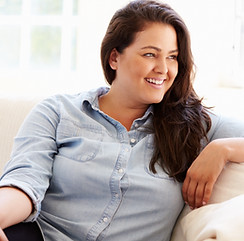Step Into The Light
- Dr. Lauren Tessier
- Sep 1, 2019
- 4 min read

Light therapy isn’t new.
It’s been around for quite some time. You probably have heard about light therapy for seasonal affective disorder, often referred to SAD for the sake of brevity. Apropos, no?
Seasonal affective occurs in approximately 10% of people living in northern latitudes, and has the ability affect up to 5% of the population for nearly 150 days of the year. In general those at higher risks for developing sad are younger in age, female, and those living at a higher latitude.
SAD is the experience of a recurrent major depressive episode occurring in the fall and winter seasons. Symptoms can include, but are not limited to: social withdrawal, feelings of despair, low self-worth, weight fluctuations, difficulty focusing, lack of interest in previously enjoyed activities, appetite change, and sleep pattern changes among others. In order for a SAD diagnosis to be considered, symptoms must persist for at least two weeks. The diagnostic criteria also requires the passage of time—two consecutive years of complaints; meanwhile the at home treatment and prevention does not. As a consumer, you are able to purchase and use light therapy without a prescription from a physician.
Currently the cause of SAD is unclear. There are many theories as to why it happens, however, currently the information we have is correlative rather than causative. Some research suggests that elevated levels of melatonin are to blame.
Meanwhile other studies correlate low vitamin D status to SAD. It is thought that Vitamin D levels have an impact on serotonin and thus depression. Therefore, since Vitamin D is created in response to sun exposure, of which there is less in the fall in winter months, it is theorized that SAD may be possibly caused by low vitamin D status.
One study in particular, noted that a re-uptake protein called “SERT” was higher in the winter months. Elevations in this protein lead to an increase in the re-uptake of serotonin, ultimately leaving less serotonin available in in the neural synaptic cleft. In short this finding equated to less biologically active serotonin available to the brain. A study done in 2016 noted that SERT was lower after 14 days of daily early morning light therapy sessions-- a promising finding.
Using light therapy properly is important. It’s not enough to simply purchase any lamp and spend some time in front of it. Some research suggests early morning use, however a study done in Scandinavia suggests that using light therapy any time during the day, is just as effective, and potentially easier to adhere to when compare to daily early morning use.
So how do you know your lamp is strong enough? When shopping for a lamp be sure to review the lux rating of each appliance. The typical treatment suggestion is 10,000 lux for approximate 30 minutes. However, keep in mind that lux ratings are also dependent on distance. Manufacturers should state the distance at which the lux rating occurs. For example, you can have two units each at rated at 10,000 lux, however upon closer inspection you may notice that one is rated at 10,000 lux at a distance of 24 inches, while the other is rated at 16inches. You may want the extra room depending on whether or not you plan on multitasking while using the lamp.
This extra room is important as you must sit facing the lamp in order to get its full benefits. You do not need to stare at the lamp (not advised), but having the lamp in the direct line of sight, and at the proper distance, is the key to optimal treatment. For example, if you plan on using light therapy while eating breakfast, you may want to factor in the distance of the lux rating of your lamp. Needless to say, it’s going to be difficult to multitask if the 10,000 lux rating is for a distance of 12 inches. Light therapy lamps can be expensive, and typically lower lux lamps are slightly cheaper. There is some potential benefit to using a lower lux rating, however, a longer exposure time may be needed to experience the same benefit as a 10,000 lux lamp. As mentioned previously, optimal treatment is with a 10,000 lux lamp for 30 minutes. Therefore it is reasonable to use a 5,000 lux lamp for approximately 1 hour in order to achieve similar benefit.
So now that you know what to buy and how to use is, you need to understand when to use it. Keep in mind the days become shorter at the summer solstice. Therefore, it may be of benefit to start light therapy before the dead of winter. I typically suggest that those who know they have a predilection toward developing SAD start supplementing their shorter days with time in front of the lamp. In general, depending on the latitude, this can start as early as late summer.
Ultimately light therapy is aimed at increasing the length of your day, in order mimic a more balanced circadian rhythm. Therefore, light therapy may also be beneficial for people who do not follow the typical sunrise/waking and sunset/sleeping schedule. This could potentially apply to people who: work long shifts or overnight shifts, travel for business (jet lag), suffer from insomnia, or anyone else with chaotic sleeping patterns and disturbed circadian rhythms.




